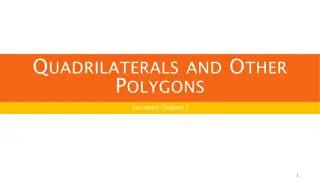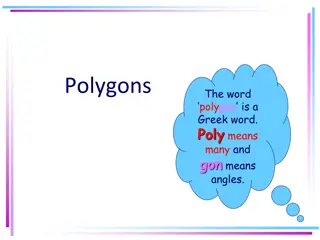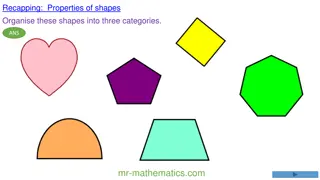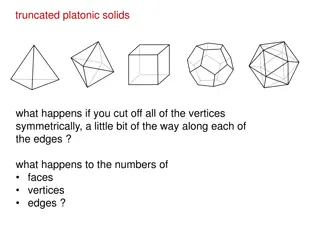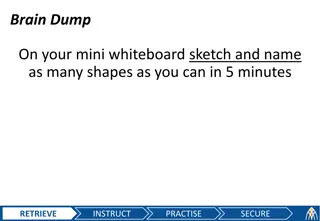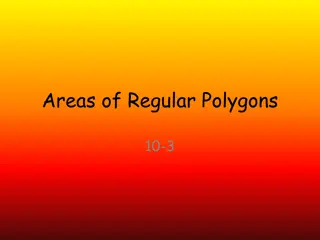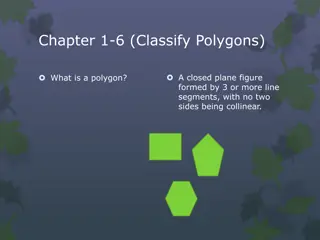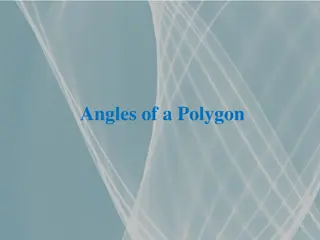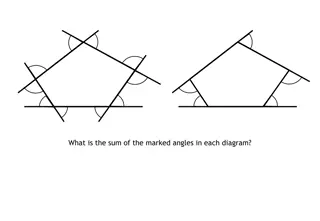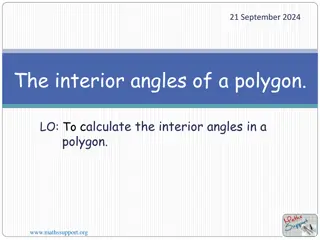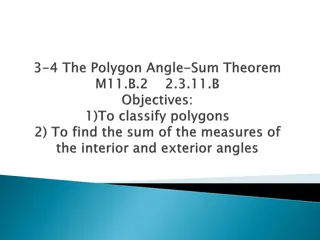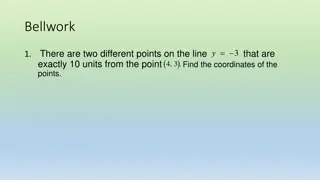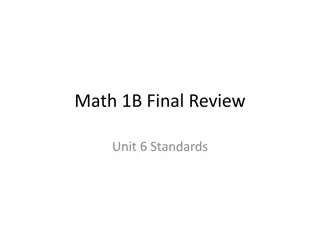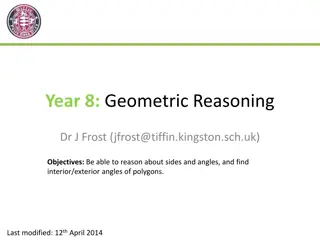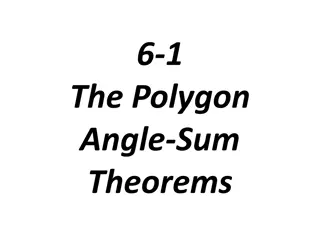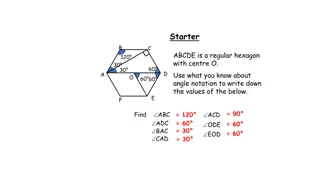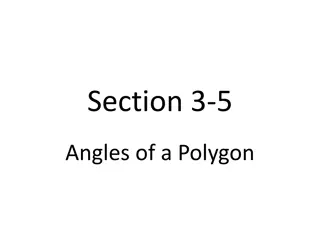Understanding Regular Polyhedra and Polygons
Regular polygons and polyhedra are fundamental shapes in geometry. A regular polygon has sides and angles that are congruent, such as equilateral triangles and squares. Polygons are simple closed figures made with line segments. Polyhedra are solids bounded by polygons as faces. Regular polyhedra are polyhedra with congruent regular polygon faces. They are also known as Platonic solids. The relationship between polygons and polyhedra is seen in how faces of regular polyhedra correspond to regular polygons. Nets of polyhedra show a flat layout plan of the faces.
Download Presentation

Please find below an Image/Link to download the presentation.
The content on the website is provided AS IS for your information and personal use only. It may not be sold, licensed, or shared on other websites without obtaining consent from the author. Download presentation by click this link. If you encounter any issues during the download, it is possible that the publisher has removed the file from their server.
E N D
Presentation Transcript
Regular Polygons A regular polygon is a polygon with all sides congruent and all angles congruent such as equilateral triangle, pentagon, regular hexagon, .. square, regular
Polygons Polygons are simple closed plane figures made with three or more line segments. Polygons cannot be made with any curves. Polygons are named according to their number of line segments, or sides. 9/11/2024
Polyhedron What is a polyhedron? Circles are not polygons
Identifying Polyhedra A polyhedron is a solid that is bounded by polygons, called faces, that enclose a single region of space. An edge of polyhedron is a line segment formed by the intersection of two faces A vertex of a polyhedron is a point where three or more edges meet
Regular Polyhedra A polyhedron is regular if all its faces are congruent regular polygons. Not regular 3 faces Vertices are not formed by the same number of faces 4 faces regular
Regular Polyhedra A polyhedron is called a regular polyhedron or Platonic Solid if the faces of the polyhedron are congruent regular polygonal regions, and if each vertex is the intersection of the same number of edges. Polyhedra is the plural for polyhedron.
Relationship Between Polygons and Polyhedra A polyhedron and polygon share some of the same qualities. A regular polyhedron s face is the shape of a regular polygon. For example: A tetrahedron has a face that is an equilateral triangle. This means that every face that makes the tetrahedron is an equilateral triangle. Around all the vertices and every edge is the same equilateral triangle.
Relationship Between Polygons and Polyhedrons A polyhedron is made of a net which is basically like a layout plan. It is flat and made of all the faces that you will see on the polyhedron. For example: A cube has six faces all of them are squares. When you open the cube up and lay it out flat you see all of the six squares that make up the cube.
Platonic Solids Tetrahedron
Platonic Solids Tetrahedron Octahedron
Platonic Solids Tetrahedron Octahedron Icosahedron
Platonic Solids Cube Tetrahedron Octahedron Icosahedron
Platonic Solids ~There are only five platonic solids~ Hexahedron Tetrahedron Octahedron Icosahedron Dodecahedron
, Euler s Formula and Platonic Solids https://www.youtube.com/watch?v=C36h00d7xGs&lis t=PLW1zH15TmnByfL1TkOxJW-FuEcFvBH- x_&index=10&t=0s V - E + F = 2
Leonhard Euler Euler = Oiler euler euler euler


